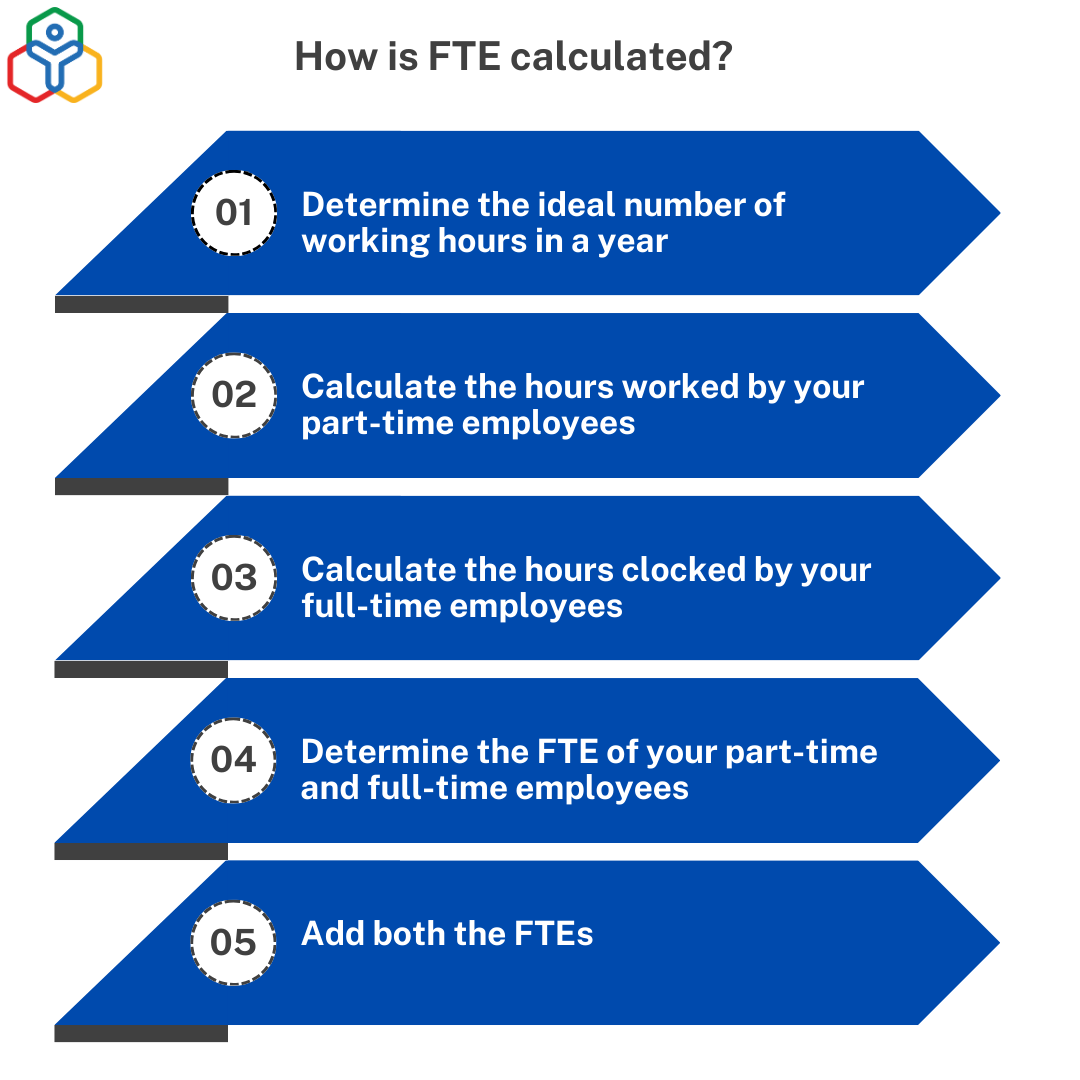- HOME
- HR insights
- FTE: What is it and how is it calculated?
FTE: What is it and how is it calculated?
- Last Updated : March 14, 2024
- 3.2K Views
- 5 Min Read

If you're a service-based organization, it's crucial to track employee hours so you can pay them fairly and bill your clients accurately. Even if your organization doesn't belong to the service sector, tracking the number of employee working hours helps you ensure compliance with labor laws and get insights into employee productivity. Let's break down the basics of Full-Time equivalent and explore how it can help you calculate employee hours.
What is FTE?
FTE, short for Full-Time Equivalent, is a metric that allows organizations to determine the amount of work that each of their employees, including full-time, part-time, and temporary workers put in at work. It converts different amounts of hours into a single unit so that it's easy for organizations to understand how much work employees can collectively manage.
For example, going by the standard work week, if you require your staff to work eight hours daily across five days, their total working hours for a week should amount to 40 hours. Since your full-time employees work the standard hours defined by your organization, their Full-Time Equivalent would stand at 1.0. Similarly, part-time employees working for an average of 30 hours per week would have an FTE of 0.75.
FTE offers a more standardized way to track and compare employee workloads, irrespective of their type of employment.
What is the purpose of using FTE?
FTE is used by many organizations to make better decisions when it comes to hiring, budgeting, and project planning. For instance, by understanding the total FTE count of their organization and their project load, HR teams can get a better idea about whether they have sufficient resources or if they need more. This ensures they always have enough resources to meet the organization's goals, objectives, and workload. This also prevents unnecessary staffing.
When it comes to project planning, understanding the FTE of each employee helps project managers allocate resources based on their timelines. They can also make use of FTEs to distribute their project tasks evenly among team members so that no one is overburdened or underutilized, as well as to understand resource expenses associated with each project for more accurate client billing.
What is the formula for calculating FTE?
To calculate an employee's Full-Time Equivalent use the following formula:
FTE of an employee = Employee's actual working hours / Standard working hours of a full-time employee
How to calculate FTE in 5 steps?

Here's a step-by-step explanation to help you understand how FTE is calculated:
Determine the ideal number of working hours in a year
If your organization follows the traditional work week, where employees work for about eight hours a day for five days, then the total weekly working hours for an employee would be 40. Given that there are 52 weeks in a year, the total number of annual working hours for an employee would be 2,080(40 hours * 52 weeks = 2080 hours).
Learn more about how many hours and days employees work in a year!
Calculate the hours worked by your part-time employees
In this step, calculate the average number of hours worked by your part-time staff in a year. For instance, consider that you have 10 part-time workers, each contributing an average of 20 hours in a week. In this case, their total weekly hours would be 200. To determine the total yearly hours of your part-time staff, simply multiply 200 by 52, which would come to 10,400 hours.
Calculate the hours clocked by your full-time employees
For this step, consider that you have 10 full-time workers, each contributing an average of 40 hours a week. Similar to the previous step, multiply the number of full-time employees by their average weekly working hours to find the total hours contributed by all of them in a week, which would be 400 hours in this case. Simply multiply it by 52 to determine their annual working hours. The result would be 20,800 hours.
Determine the FTE of your employees
Taking into account the example that we've assumed, the Full-Time Equivalent of part-time employees for a year would be 5 and the FTE of your full-time employees would be 10.
FTE of an employee for a year = Employee's yearly working hours / Standard working hours of a full-time employee for a year
FTE of part-time workers = 10,400 (From Step 2)/2080 (From Step 1) = 5 FTEs
FTE of full-time workers = 20,800 (From Step 3)/2080 (From Step 1) = 10 FTEs
Add both the FTEs
Calculate the Full-Time Equivalent of your organization for a year by adding the FTE figures of your full-time and part-time employees. In this case, your total FTE would come up to 15.
What does FTE mean in salary?
In some organizations, HR teams make use of Full-Time Equivalent to calculate the salaries of their part-time workers. As a rule of thumb, the salary of the part-time employee is calculated by multiplying their FTE with the annual salary of the full-time employees working at the organization. Let's assume that a full-time content writer who works 40 hours per week in India is given an annual compensation of Rs. 5,00,000. Similarly, let's consider that the part-time employee engaged in the same role as the full-time employees works for about 20 hours per week. In that case, their FTE would be 0.5. So, the annual compensation of the part-time employee would be Rs. 2,50,000 (0.5*5,00,000).
Is FTE only applicable to full-time employees?
FTE applies to all employees, irrespective of their type of employment, since it's only a metric used to standardize the amount of hours employees put in and understand their workload trends. FTE for full-time and part-time employees may differ based on their hours, but it applies to all types of employees.
What is the role of FTE in ACA compliance?
The Affordable Care Act, also known as ACA, was passed in 2010 to make health insurance accessible to more citizens. In the context of the workplace, organizations with 50 or more full-time equivalent employees are required by this statute to offer health insurance benefits to their employees. According to ACA, any employee who works for an average of 30 hours per week would be considered a full-time employee. In that case, if your organization goes by the standard 40-hour work week, the FTE of one full-time employee would add up to 1.33.
Wrapping up
Keeping track of your employees' workload helps your organization ensure compliance, make better hiring decisions, and allocate resources to projects effectively. We hope this blog post gave you a fair idea about all the information required to calculate the FTE of your organization!
 Tarika
TarikaContent Specialist at Zoho People


